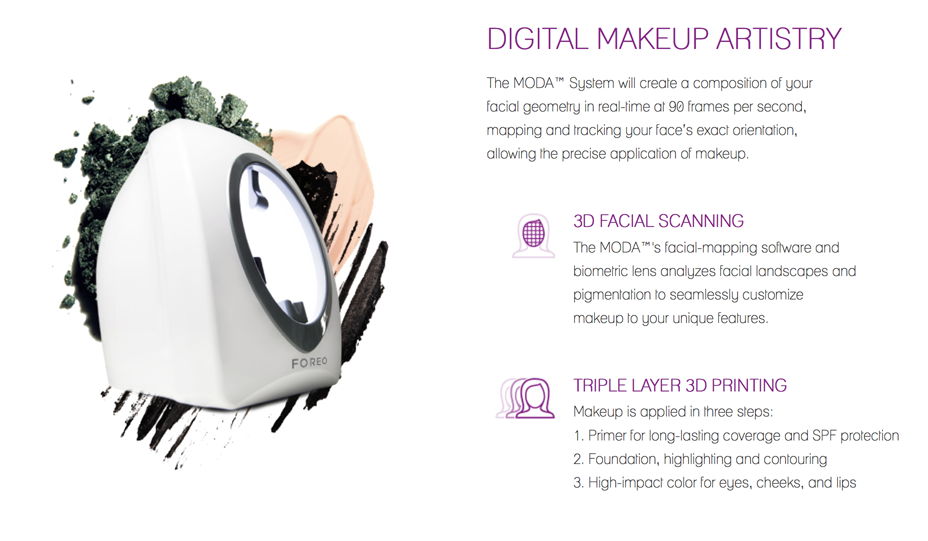At the end of last week, a product was announced from Swedish beauty brand FOREO and, as occurs in this hype-driven industry/society, it is already being labelled a 3D printer. The MODA makeup printer is not dissimilar from the Mink makeup printer unveiled during a TED Talk last year, in that it uses 3D scanning technology to apply pre-chosen makeup to the contours of a person’s face. Though we called the Mink a 3D printer, I’m still not sure whether or not either the MODA nor the Mink are 3D printers. I’m leaning towards “no”.
Defining 3D printing can be difficult, but as we move out of the industry’s hype cycle and into true research, it’s important to try to stop the hype. It’s hard! I know! I’ve been suckered into it many times and I’m definitely guilty of misidentifying/defining the technology. But, as I’ve learned more and more about it, I think that there is a clear defining factor and it’s described well on the “3D printing” entry on Wikipedia: “In 3D printing, additive processes are used, in which successive layers of material are laid down under computer control.”
So, when someone, like BILL_NYE_THO, says “S/O TO UTERUSES, THE ORIGINAL 3-D PRINTERS”, they’re wrong, unless the uterus/DNA/reality is run by a computer, which is not impossible, but has not yet been proven. A computer and a digital file are necessary for the process to be considered “3D printing”, based on that Wiki definition. The MODA and Mink have that part of the definition down.
A MODA user can choose a picture from online, using the MODA app, and pick the look that they’re after. Then, they place their face into the MODA, which is equipped with a chinrest and forehead-rest. The device, then, scans the user’s face and applies the makeup, made from an FDA-approved, skin-safe concoction, all in thirty second. Here’s the part that I’m conflicted about: it applies the make up in layers, starting with primer, then foundation, then color.
Because the device only uses three layers, my instincts tell me that this is not 3D printing. The Pancakebot also only constructs a few layers, so I’m thinking about reversing my previous definition of the Pancakebot as a “food 3D printer” and will, from now on, only refer to it as a “food printer”. And “3D printing” pens? I had started calling them FFF pens, as they extruded filament, but with the CreoPop pen using light to cure photosensitive resin, I might have to call them “printing pens”?
I’m conflicted! What are your thoughts? Is this, potentially awesome and potentially dangerous, thing a 3D printer? Either way, it could help me get a spot on the next season of RuPaul’s Drag Race.




